This Dot Blog
This Dot provides teams with technical leaders who bring deep knowledge of the web platform. We help teams set new standards, and deliver results predictably.

Building Bulletproof Teams: Why Blame Is Your Worst Enemy with Leon Revill
Leon Revill, uncovers the profound impact of nurturing trust, collaboration, and shared responsibility within teams. His interview with Tracy Lee explores the importance of fostering an environment where mistakes are embraced as valuable learning experiences, steering clear of blame and focusing on growth. Firstly, Leon emphasizes the need for organizations to cultivate a blame-free atmosphere, encouraging team members to take risks and glean insights through failure. By reframing mistakes as learning opportunities, teams foster a culture that fuels growth and innovation. This approach not only instills a sense of ownership among individuals but also nurtures psychological safety, paving the way for enhanced idea-sharing and collaboration. Secondly, Tracy and Leon underscore the pivotal role of transparent communication within teams. Through fostering honest dialogue, organizations can strengthen trust and deepen connections among team members. Such open communication fosters collective accountability, where each member bears responsibility for the team's triumphs. Empowering individuals to voice their thoughts and concerns fosters an environment where diverse perspectives are valued, ultimately enhancing decision-making and problem-solving. Moreover, Leon offers examples of how organizations can drive continuous improvement by empowering their teams. Providing individuals with the autonomy to make decisions and take ownership not only spurs personal growth but also bolsters team success. By nurturing a growth mindset and facilitating skill development, organizations foster a culture that embraces learning and adapts to change. The interview touches on the evolving technology landscape and its implications for team collaboration. With the emergence of artificial intelligence and automation, Revill stresses the importance of aligning development processes with these advancements. Collaboration becomes imperative in this scenario, as teams must collaborate to grasp and implement these technologies effectively. Through cultivating a culture of trust and collaboration, organizations can navigate technological shifts and remain at the forefront of innovation. Download this episode here....
May 16, 2024
2 mins

Maximizing Server Rendering for Interactive Next.js Applications
Maximize server rendering while maintaining interactivity by strategically combining React Server Components (RSCs) and client components in a Next.js application....
May 15, 2024
5 mins

The Key Elements of Effective Software Engineering Leadership with Revathi Pillai
Revathi Pillai, the Chief Engineering Officer of Mutualink, emphasized the significance of clear communication, collaboration, and transparency in software engineering leadership, and shared her journey from engineer to manager and shed light on the importance of self-advocacy for women in the workplace. Along with Tracy Lee, Revathi discussed the delicate balance between developing new features and maintaining existing products. By managing cost reduction projects and considering technical debt, engineering leaders can ensure that their products remain robust and efficient in the long run. Revathi also emphasized the role of efficient processes and hiring individuals with the right mindset in driving cultural change within an organization. By implementing streamlined workflows and fostering a collaborative environment, engineering teams can minimize chaos and create a smoother work experience. Lastly, they talked about the benefits of leveraging artificial intelligence in operations. By harnessing the power of AI, engineering teams can automate repetitive tasks, optimize workflows, and improve overall efficiency. Revathi’s perspective underscores the potential of AI in transforming the way engineering teams operate, enabling them to focus on more strategic and impactful work. Download this episode here....
May 14, 2024
1 min

How to Promote a Great Open Source Ecosystem with Dominic Gannaway and A Fuzzy Bear
A Fuzzy Bear (Astral Team, Linux Foundation) and Dominic Gannaway (Vercel) talk tech advancements and community building backstage at CityJS Conf London 2024. The conversation began with updates about Vercel, discussing how the team is harnessing AI and edge capabilities to furnish a generative interface attuned to users' preferences. As the conversation with Tracy Lee continued, Fuzzy Bear and Dominic underscored the importance of fostering a robust culture within online communities to nurture engagement and collaboration and how new technologies are reshaping online interactions, fostering inclusivity, and enduring connections. The conversation concludes with a discussion about how the advent of AI and edge capabilities enables a realm of possibilities for creating intuitive interfaces, the pace of technological evolution poses a formidable challenge. Balancing innovation with compatibility across diverse devices and platforms is critical in this dynamic ecosystem, and the two predict a future marked by customizable interfaces and enriched user experiences, enabled by AI. Download this episode here....
May 10, 2024
1 min

The CSS / Utility hybrid approach with Tailwind v4
The post concludes with a look at modern CSS and interesting hybrid utility patterns with the Tailwind v4 release...
May 10, 2024
4 mins
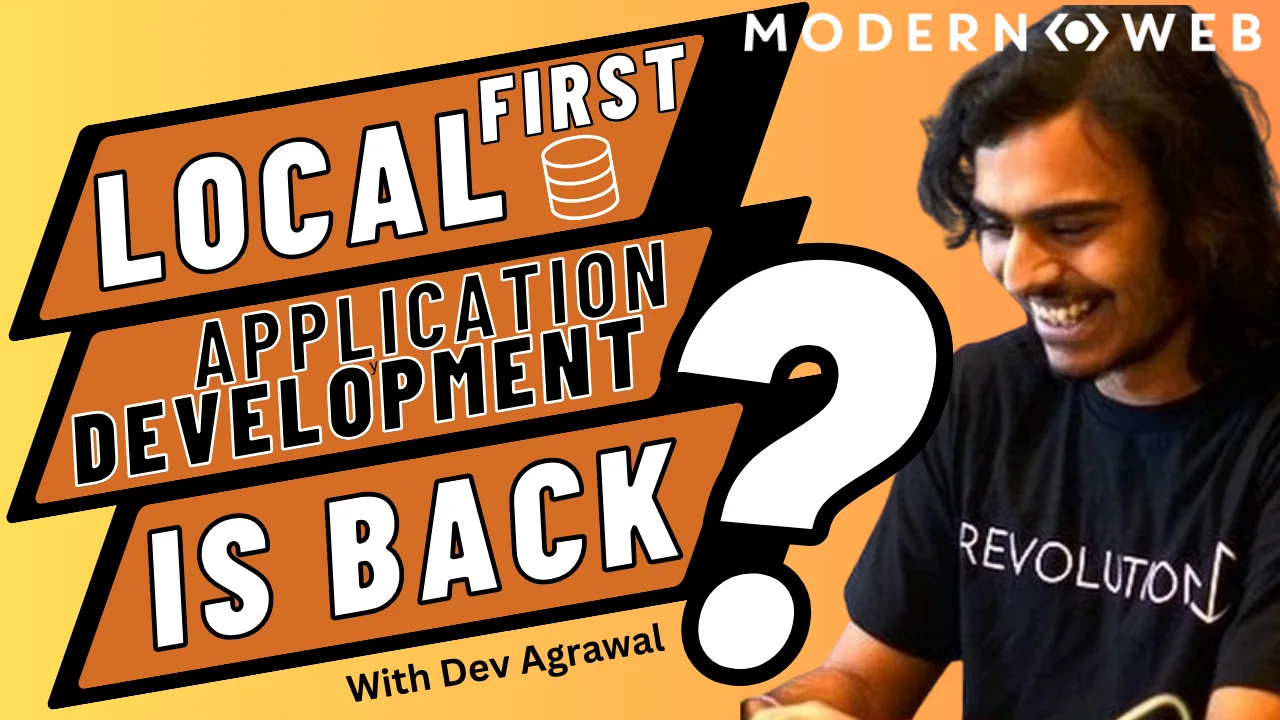
Local-First Application Development is Back with Dev Agrawal
In a world where connectivity is often taken for granted, the concept of "local first" applications is gaining traction. In this episode of the Modern Web Podcast, Dev Agrawal sheds light on this innovative approach, which prioritizes user devices as the primary data source. By enabling offline access and user control, local-first apps are revolutionizing the way we interact with technology. Traditionally, applications have relied on server-centric models, where data is stored and managed on remote servers. However, local-first architecture flips this paradigm by placing user devices at the forefront. By doing so, these apps empower users with offline access and control over their data. One of the key advantages of local-first architecture is its ability to create personalized experiences. By leveraging the data stored on user devices, apps can tailor their functionality to individual preferences and needs. Moreover, local-first apps excel at synchronization, ensuring that data remains consistent across multiple devices. This seamless synchronization allows users to switch between devices effortlessly, without worrying about data loss or inconsistencies. Data ownership is a critical aspect of local-first applications. With the user's device holding the definitive data version, individuals have greater control over their information. This is particularly important in collaborative environments, where multiple users need to access and modify shared data. To address this, local-first apps employ Conflict-free Replicated Data Types (CRDTs), which ensure that conflicts are resolved automatically and data integrity is maintained. By prioritizing data ownership and collaboration, local-first architecture fosters a more inclusive and efficient work environment. While local-first architecture offers numerous benefits, it is important to strike a balance between local and server data management. Certain data, such as large media files or complex computations, may still be better suited for server storage. Additionally, server-centric models can provide valuable backup and recovery options. As web development paradigms evolve, finding the right balance between local and server data management will be crucial in creating integrated user experiences and adaptable frameworks....
May 9, 2024
2 mins

Vercel vs. VPS - What's the drama, and which one should you choose?
A breakdown of the hosting options you have and when you should choose a cloud provider such as Vercel and when a VPS or a Linux server in your basement is just enough....
May 8, 2024
8 mins
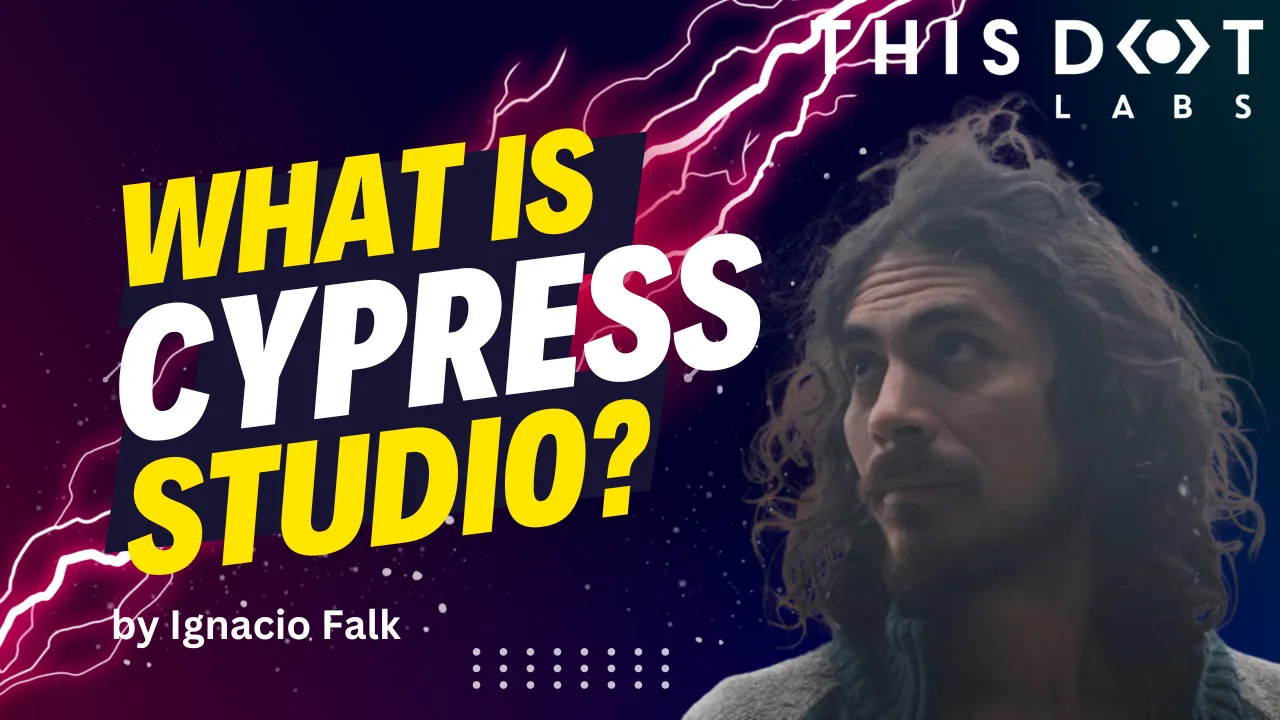
What is Cypress Studio?
Cypress Studio has been around for some time. It was introduced in Cypress v6.3.0, removed in v10, and reintroduced in v10.7.0. This blog post will dive into its current state and how to use it today....
May 3, 2024
5 mins

3 VueJS Component Libraries Perfect for Beginners
For developers checking out VueJS for the first time, the initial steps are overwhelming, particularly when setting up projects from square one. But don’t worry! The VueJS ecosystem offers a plethora of remarkable component libraries, easing this early obstacle. These three libraries are pre-built toolkits, providing beginners with the means to kickstart their VueJS projects effortlessly. Let’s take a look! Quasar Quasar is among the most popular open-source component libraries for Vue.js, offering a comprehensive set of ready-to-use UI components and tools for building responsive web applications and websites. Designed with performance, flexibility, and ease of use in mind, Quasar provides developers with a wide range of customizable components, such as buttons, forms, dialogs, and layouts, along with built-in support for themes, internationalization, and accessibility. With its extensive documentation, active community support, and seamless integration with Vue CLI and Vuex, Quasar empowers developers to rapidly prototype and develop high-quality Vue.js applications for various platforms, including desktop, mobile, and PWA (Progressive Web Apps). PrimeVue PrimeVue is a popular Vue.js component library offering a wide range of customizable UI components designed for modern web applications. Developed by PrimeTek, it follows Material Design guidelines, ensuring responsiveness and accessibility across devices. With features like theming, internationalization, and advanced functionalities such as lazy loading and drag-and-drop, PrimeVue provides developers with the tools to create elegant and high-performing Vue.js applications efficiently. Supported by clear documentation, demos, and an active community, PrimeVue is an excellent choice for developers seeking to streamline their development process and deliver polished user experiences. Vuetify Vuetify is a powerful Vue.js component library that empowers developers to create elegant and responsive user interfaces with ease. Built according to Google's Material Design guidelines, Vuetify offers a vast collection of customizable UI components, ranging from buttons and cards to navigation bars and data tables. Its comprehensive set of features includes themes, typography, layout grids, and advanced components like dialogues and sliders, enabling developers to quickly build modern web applications that look and feel polished. With extensive documentation, active community support, and ongoing development, Vuetify remains a top choice for Vue.js developers seeking to streamline their workflow and deliver visually stunning user experiences. For newcomers venturing into Vue.js, the initial setup might seem daunting. Thankfully, Vue.js offers a variety of component libraries to simplify this process. Quasar, PrimeVue, and Vuetify are standout options, each providing pre-built tools to kickstart projects smoothly. Whether you prefer Quasar's extensive UI components, PrimeVue's Material Design-inspired features, or Vuetify's responsive interfaces, these libraries cater to diverse preferences and project requirements. With their clear documentation and active communities, these libraries empower developers to start Vue.js projects confidently and efficiently, enabling Vue developers to create polished user experiences....
May 1, 2024
2 mins
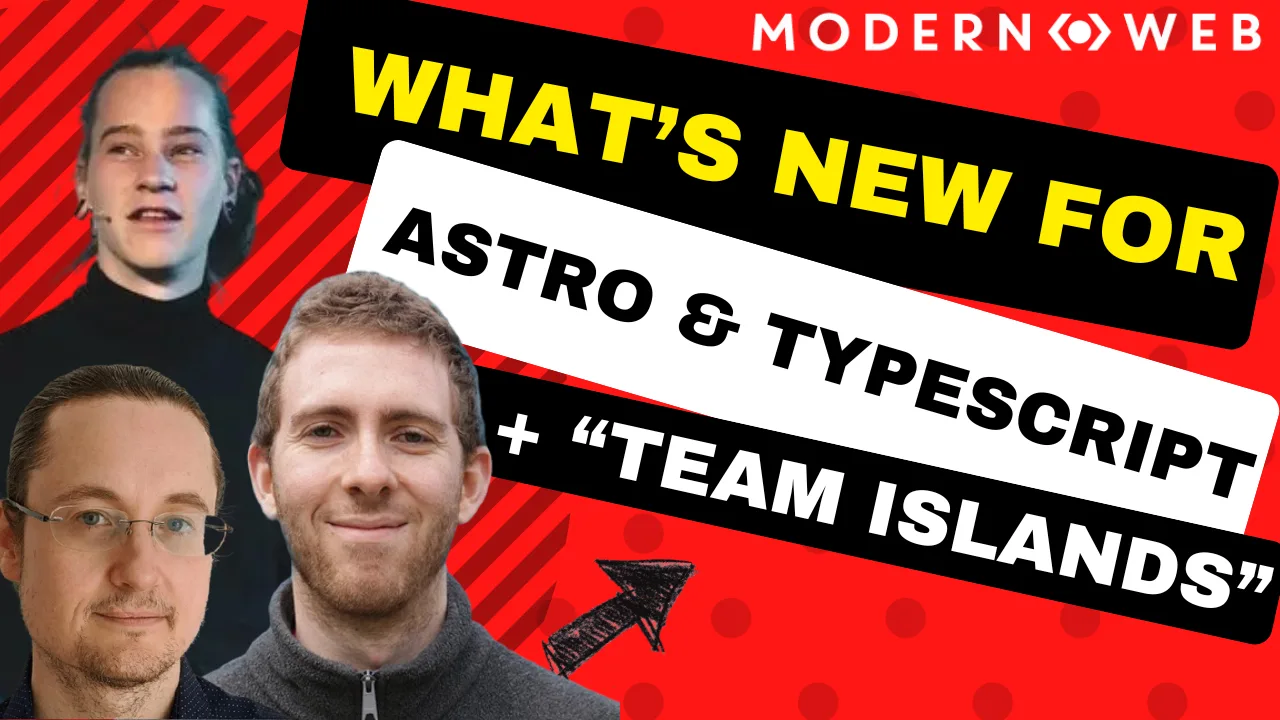
What’s New for Astro & TypeScript + “Team Islands” with Elian, Josh, & Chris (Backstage @ CityJS Conf)
Elian Van Cutsem, Josh Goldberg, and Chris Noring, joined Tracy Lee backstage at CityJS Conf London to talk about what’s new in the Astro, and TypeScript ecosystems. The conversation also touched on the utilization of iterators in JavaScript and their potential to augment web application functionality. The group weighed in on hot topics in web development, like islands, resumability, and the nuanced interplay between TypeScript and iterators were explored, offering profound insights into optimizing code for enhanced user experiences. The discourse also highlighted the paramount importance of collaboration in driving advancements within web development. Despite perceived competition among technologies, the group emphasized the importance of collaboration for propelling innovation. By fostering a collaborative environment where different technologies learn from each other's strengths, address shared challenges, and collectively evolve, the web ecosystem becomes more inclusive and progressive. Furthermore, the podcast episode explored the empowering aspects of the Astro ecosystem, and TypeScript. The group elaborated on the latest updates and advancements in these tools, emphasizing their capacity to empower developers. Astro, renowned for its modern approach to front-end development, alongside the robust capabilities of TypeScript, equips developers with the means to craft scalable, maintainable code and exceptional web experiences....
May 1, 2024
1 min
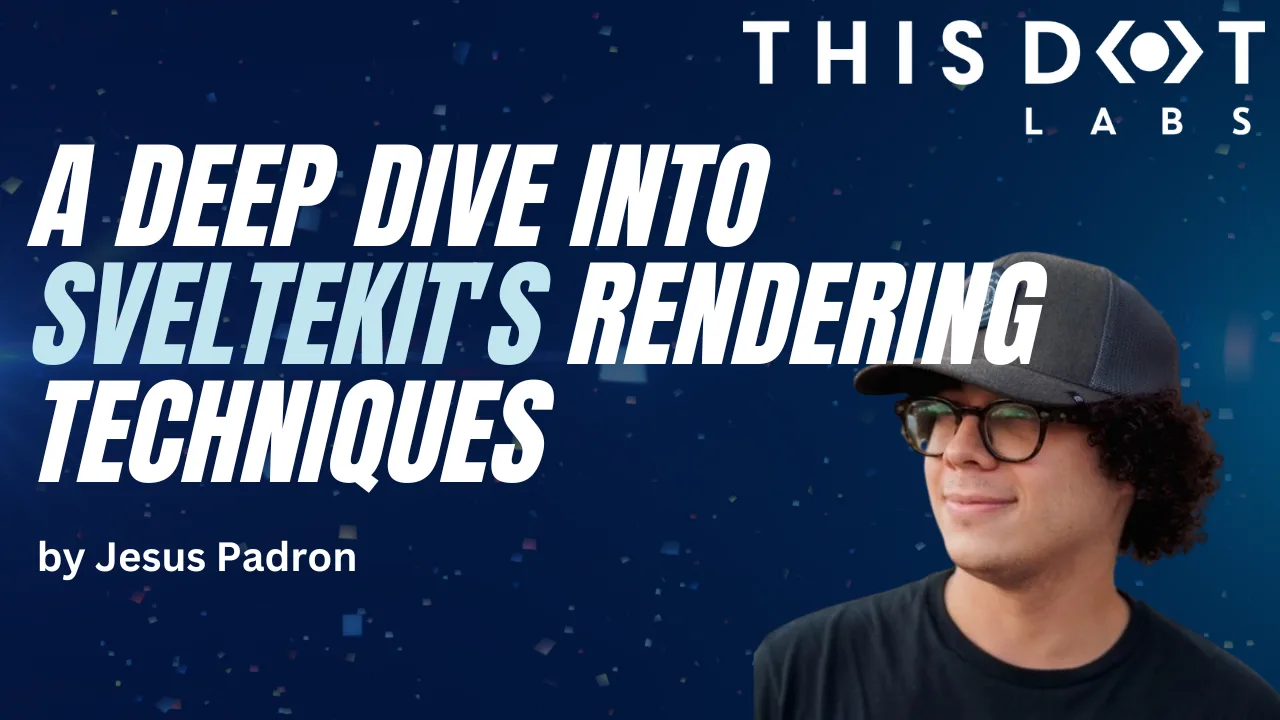
A Deep Dive into SvelteKit's Rendering Techniques
SvelteKit is a meta-framework for Svelte that allows you to develop pages based on their content. At its core, SvelteKit introduces three fundamental strategies out of the box, each designed to streamline the development process and...
May 1, 2024
7 mins
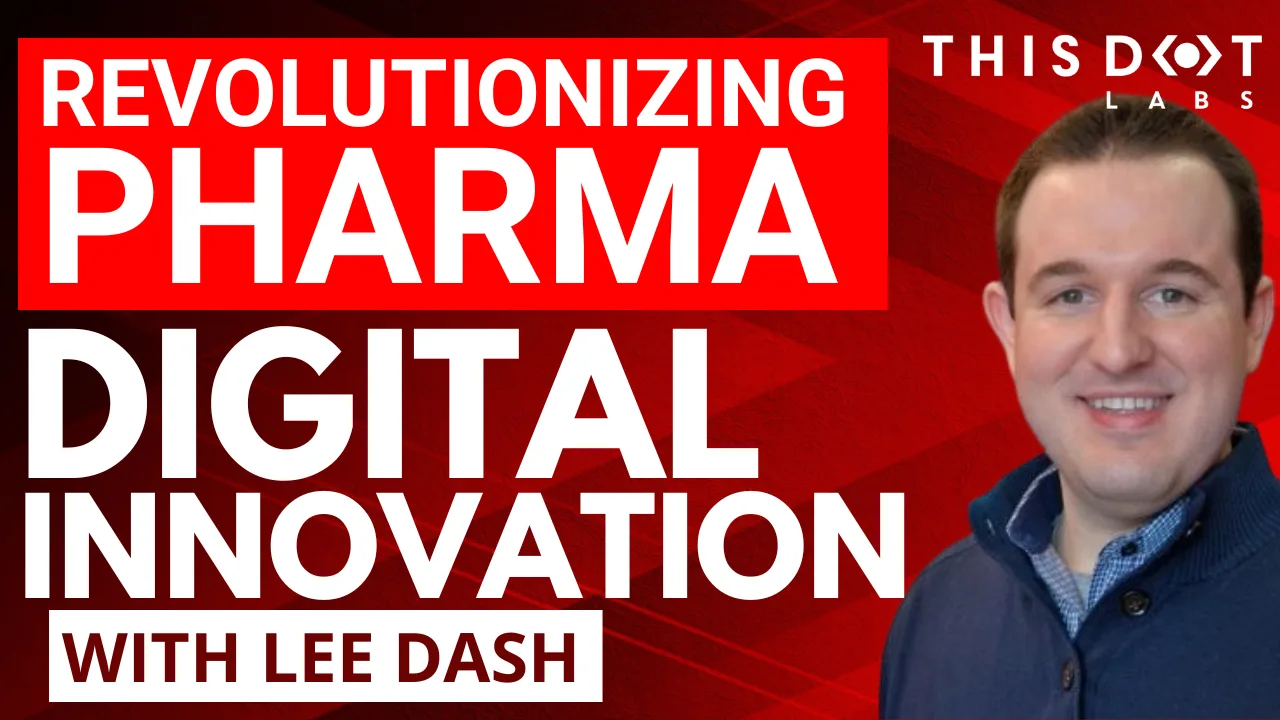
Revolutionizing Pharma using Cutting-Edge Digital Innovation with Lee Dash
Lee Dash, SVP of Digital Innovation at Medistrava, sheds light on the pivotal role of user experience (UX) within pharmaceuticals. Lee underscores the importance of effectively delivering scientific content to healthcare professionals and the inherent challenges in innovating UX within an industry steeped in traditional systems. This episode navigates the complexities of adapting user-friendly interfaces to pharmaceutical contexts and the ongoing endeavors to elevate UX. Lee stresses the significance of optimizing the content supply chain and user testing to ensure a seamless user experience. In an arena where scientific information holds paramount importance, presenting it in an easily accessible and comprehensible manner for healthcare professionals is essential. By integrating user feedback and conducting thorough testing, pharmaceutical companies can refine their digital platforms to meet the diverse needs of stakeholders, encompassing medical science liaisons, patients, researchers, and physicians. A notable takeaway from the dialogue is the necessity for customized solutions tailored to the distinct requirements of various stakeholders within the pharmaceutical industry. Each faction possesses unique needs and preferences concerning the access and utilization of scientific content. By comprehending these specific needs, pharmaceutical entities can develop user-friendly interfaces that resonate with the preferences of each stakeholder group. This approach not only enhances user experience but also bolsters the overall efficacy of digital platforms. Lee Dash shares the significance of assembling a versatile development team equipped with multifaceted skills. In an industry characterized by rapid evolution, having a team capable of adapting to shifting technologies and user expectations is imperative. Additionally, Lee talks about the importance of infusing technical acumen into leadership teams. By cultivating leaders well-versed in the technical intricacies of digital innovation, pharmaceutical companies can drive efficient and effective development processes. Download this episode here....
Apr 30, 2024
2 mins